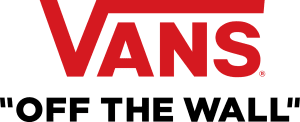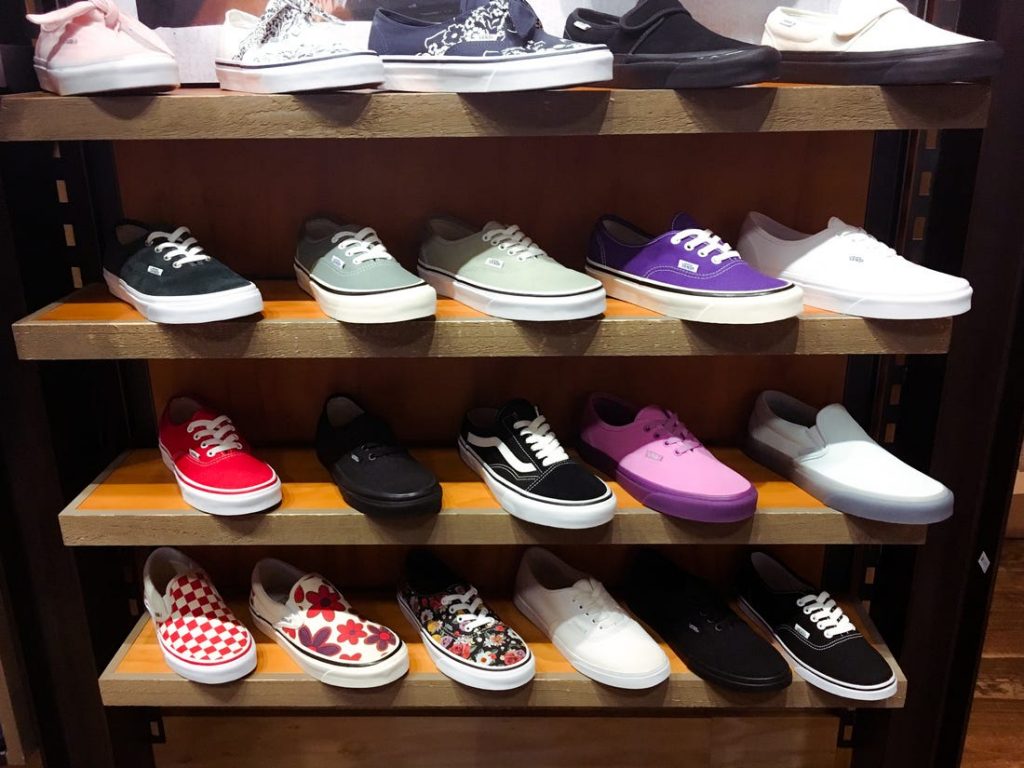Contents
Summary
California-based Vans is a leading sports lifestyle brand that merges functionality, style, and individuality, known for its iconic skate shoes and diverse range of apparel and accessories. With a legacy rooted in skateboarding culture, Vans embraces creativity and self-expression, offering products that resonate with youth and streetwear enthusiasts worldwide. Beyond its product offerings, Vans actively engages its community through personalized services, events, and collaborations, fostering a culture that champions art, music, and action sports. Through these efforts, Vans has become a symbol of authenticity and an enduring influence in youth culture.
History
In 1944, Paul Van Doren dropped out of school and his mother got him a job at Randy’s, a shoe manufacturer. Doren worked his way up the ranks to Executive Vice President and Randy’s became one of the biggest shoe manufacturers in the US. Following his success in Massachusetts- Doren was instructed to turn around a factory in Garden Grove- California that was losing reportedly a million dollars each month. In just eight months the factory was doing better than the one in Massachusetts and that’s when Doren decided he wanted to launch his own shoe brand.
In 1966, the brothers and partner Gordon C. Lee opened the first store of Vans [originally named Van Doren Rubber Company] in Anaheim, California. On opening day, there were just display models and twelve people ordered deck shoes, which were made that day itself. The brand was distinctive as it manufactured and sold shoes on its premises. Observing his son’s interest in skateboarding, James began manufacturing skateboarding shoes.
Vans 95- with padded collar and multiple color combinations- were laced up by skateboarders in no time. In the late Seventies Vans launched “The Old Skool” skate shoe with leather panels for durability. In 1978, the brand introduced “Style 38,” which protected skateboarders’ ankle. In 1979 Vans introduced slip-on shoes which were a rage in southern California. It was also the decade that introduced Vans logo which began as a doodle by Paul Van Doren and referred to as “jazz stripe”. During this time, Vans expanded to seventy stores in California and sold through dealers.
In the Eighties, Vans Slip-Ons caught everyone’s attention when worn by actor Sean Penn in “Fast Times At Ridgemont High”. Sadly, the company could not sustain itself and filed for Chapter 11 bankruptcy protection. Although the core shoes were selling well, the broad range of products had drained funds. Courts approved the re-organization and President Paul Van Doren instructed employees to cut back on everything except shoe quality.
In three years, Vans cleared the debt of $12 million. In 1988 Paul Van Doren agreed to sell Vans for reported $74.4 million to McCown De Leeuw and Co. Paul was now Chairman and his partner, Gordy Lee, was vice-chairman. Richard Leeuwenberg was brought in to be President. One year later Vans, Inc. made its public offering at Nasdaq.
The brand introduced “Vans Snowboard Boot” in 1994. In the nineties, it embarked on an aggressive marketing plan. It bought a controlling interest in Warped Tour, a rock tour throughout the US. In 1996, Vans collaborated with Supreme to launch a series of co-branded Old Skools. In 1997, the brand purchased Triple Crown Of Surfing a Hawaiian specialty series of professional surfing events. The following year, Vans opened a 46,000 sq ft skatepark at Orange County.
In 2000, Forbes recognised Vans as one of ‘America’s best small companies.’ The following year Vans assisted with the production of “Dogtown and Z-Boys” and Stacy Peralta’s look while skateboarding. it was a good marketing move. The film won Audience Award and Best Director Award at Sundance Film Festival.
The decade also witnessed the launch of Vault By Vans, footwear melding the worlds of high-fashion and Vans’ classic silhouettes. In June 2004, VF Corporation purchased Vans for reported $396 million. The brand continues to forge collaborative efforts through “Vault by Vans” with sneaker made in alliance with designers including Marc Jacobs. In a few years, Vans released Vans x The Simpsons.
In 2010, schools in the US participated in Vans Custom Culture, a high school shoe customisation contest which culminated in four schools traveling to Vans’ home turf for a weekend of activities including the final showcase at Orange County Museum of Art. Winning school Rio Rancho High School of New Mexico received a $10,000 grant. That year, Vans reached reported $1 billion in annual sales, the first company rooted in skateboarding to achieve this feat.
Vans continues collaborations to strengthen its image… with Metallica, The Beatles, Disney and athletes Pat Moore, Steve Caballero, Geoff Rowley, Nathan Fletcher and Tony Trujillo. In a milestone moment for the brand, Vans and Karl Lagerfeld launched the coveted Vans x Karl Lagerfeld capsule collection.
Vision
California-based company Vans has a deep connection to action sports and youth culture. From its inception, Vans has sought to create a community that celebrates self-expression, particularly through skateboarding, surfing, snowboarding, and BMX. The company’s vision goes beyond the functional purpose of producing shoes and apparel; it aims to foster an environment where athletes and sports enthusiasts feel inspired and empowered. Vans’ products are not just items to be worn—they are extensions of the wearer’s personality and a lifestyle that champions originality and adventure.
Central to Vans’ vision is its commitment to sustainability and social responsibility. The company recognizes the environmental impact of its operations and has committed to developing eco-friendly practices that align with its values of innovation and social consciousness. Vans’ approach to business reflects a forward-thinking ethos, where creativity is married to responsibility. This vision has propelled the company to implement programs focused on reducing carbon footprints and enhancing community engagement. Vans also invests in partnerships and initiatives that uplift underserved communities, ensuring that the spirit of inclusivity is as integral to the brand as its iconic waffle soles.
Vans’ vision encompasses more than just commercial success; it is rooted in the desire to inspire and nurture creativity across generations. By hosting events like the Vans Warped Tour and collaborating with artists and athletes worldwide, the brand has cemented its status as more than a footwear and apparel manufacturer. It is a cultural beacon for those who value freedom of expression and the power of artistic pursuits. Vans’ unwavering dedication to blending sports, art, and social impact into a cohesive experience keeps its vision alive, vibrant, and relevant in a world that increasingly craves authenticity and purpose.
Mission
Vans’ mission is deeply rooted in empowering individuals to embrace their unique identity and creative spirit. By championing the idea of authentic self-expression, Vans fosters an environment where youth culture can thrive and flourish. The brand’s dedication goes beyond just producing footwear and apparel; it strives to build a community where creativity, individuality, and originality are celebrated. This “Off the Wall” mindset becomes a call to action for those who push boundaries, pursue their passions, and challenge conventional norms.
Encouraging this distinctive attitude, Vans has become more than just a brand—it is a platform that supports art, music, action sports, and various subcultures worldwide. Through its products, initiatives, and collaborations, Vans inspires young people to showcase who they truly are and to contribute boldly to their communities. By doing so, Vans continues to be a catalyst for personal expression, sparking inspiration and cultivating a movement that reflects a genuine, fearless approach to life.
Leadership Team
Paul Van Doren- James Van Doren- Gordon Lee (Founders)
Doug Palladini (Global Brand President)
Steve Rendle (Chairman, President and CEO )
Products and Services
Vans boasts a diverse product portfolio that embodies its commitment to blending style, performance, and individuality. The brand’s core offerings include its iconic skate shoes, known for their durability, comfort, and classic design. From the timeless appeal of the Old Skool and Authentic models to the modern advancements seen in their Pro series, Vans caters to a range of lifestyles and preferences. Beyond footwear, Vans extends its product line to apparel and accessories, featuring everything from graphic tees and hoodies to hats and backpacks. Each item is designed to reflect the brand’s signature skate and streetwear aesthetic, ensuring that fans can express their identity both on and off the board.
In addition to its physical products, Vans enhances the customer experience through a variety of services and initiatives. The company is known for its custom design service, which allows customers to personalize their shoes and apparel to create unique, one-of-a-kind pieces. Vans also engages the community through events such as the Vans Warped Tour and House of Vans, which serve as cultural hubs for music, art, and skateboarding. Through these services and experiences, Vans reinforces its brand ethos and supports a community that values creativity and self-expression.
Recognition and Awards
Founded in 1966, Vans has thrived on a legacy of impacting its greater community through action sports, music, art and design.
References
- Official website Vans
- Vans Forbes
- VF Corp To Buy Vans For $396-Million Dollars Grind TV
- How Vans Shoes Became A Quiet Fashion Juggernaut Forbes
- Surf, Skate, BMX fans flock to Vans U.S. Open Valley News
- LinkedIn profile of Vans LinkedIn
- Twitter profile of Vans Twitter
- How Vans Unlocks Growth And Impact Through A Genuine Commitment To Community Forbes
- The History and Story Behind the Vans Logo Money Inc
- An Orange County icon Irvine Weekly
- Instagram profile of Vans Instagram
- How Vans, A 50-Year-Old Sneaker Brand, Has Attained Eternal Youth Forbes
- Youtube profile of Vans Youtube
- Vans Inc. to Build Skate Park at Mall in Orange LA Times
- Wikipedia profile of Vans Wikipedia
- Inside VF Corp’s plans for The North Face, Supreme and a circular economy Glossy
- 50 years of Vans Orange County Register





